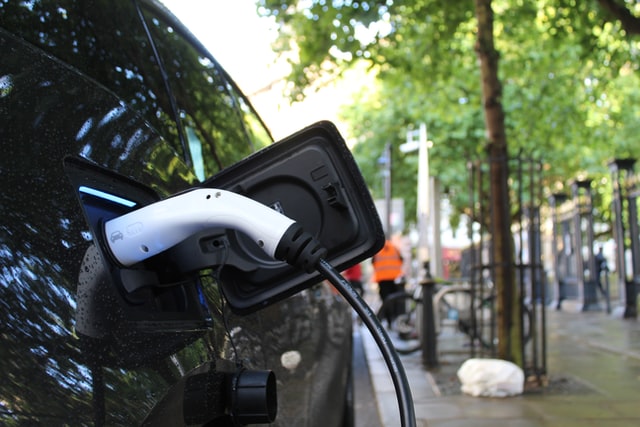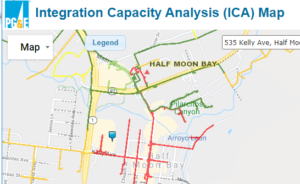
Optimizing the Siting and Design of Distributed Energy Resources
April 7, 2021Photo Credit: Andrew Roberts on Unsplash
Utilities provide integration capacity maps that can help customers and developers optimize the placement of distributed energy resources like solar generation and electric vehicle chargers. The California Public Utilities Commission recently decided to require improvements to the maps, which will unlock new uses that can aid public agencies’ decarbonization efforts.
Public agencies are increasingly looking to meet greenhouse gas emissions reduction targets by installing solar panels on publicly-owned facilities, adding electric vehicle chargers for residents’ vehicles and agency fleets, or by replacing natural gas furnaces with efficient electric heat pumps. However, the increasing adoption of distributed energy resources (DERs), such as rooftop solar and energy storage, means that the electric grid can become stressed in places. When the electric grid reaches its limits, new DERs cannot be installed without time-consuming studies or expensive utility upgrades.
Integration Capacity Analysis (ICA) is a analytical tool that can help public agencies and utilities plan for and build a cleaner electric grid by optimizing the design and placement of DERs. ICA provides a snapshot in time of the conditions on a utility’s distribution grid that reflect the grid’s ability to host additional DERs at specific locations without upgrades to the system. The information gleaned from this analysis can help regulators, utilities, public agencies, developers, and residents make more proactive, cost-effective, and efficient decisions about DER investments.
By providing greater transparency into the grid, displayed in the form of maps with supporting datasets, ICA can help reveal the operational limits of the grid, which might impact the ability of new DERs to interconnect quickly or affordably. The tool can also identify areas where DERs may be able to provide beneficial services by addressing existing grid constraints. ICA can inform more strategic investments or targeted incentives for private investment in DERs in specific areas over the long term.
California’s ICA maps were launched in 2018 and today provides useful information about the ability of the state’s grid to support more solar generation. For example, in the map below you can see that the red electric lines on the southern half of the map likely could not support a large amount of new solar generation without expensive upgrades, but in the northern half the lines are green, indicating that the grid likely could support a large amount of new solar generation.

The ICA maps also include more detailed results which public agencies can use to design new DERs with energy storage to avoid grid limits that occur occasionally. For example, the detailed results provide the size of new DERs that can be accommodated in each month. With this granular data, a public agency could determine that a community center could accommodate a 2-megawatt solar project for most of the year, but only a 1-megawatt project in March and April. In that case, the public agency could elect to install an energy storage system to capture 1 megawatt of generation in March and April, enabling it to build the full-sized 2 megawatt project without triggering delays or concerns from the electric utility.
California’s ICA maps currently do not provide useful information for public agencies and customers seeking to design or site new EV chargers or building electrification projects. Shute, Mihaly, and Weinberger filed a motion on behalf of the Interstate Renewable Energy Council asking the California Public Utilities Commission to order significant improvements to the ICA tool. In January 2021, the Commission granted the motion and established new requirements to improve the accuracy and usefulness of the ICA maps going forward. These include requiring utilities to:
- identify changes to enable the ICA results to aid customers seeking to add electric vehicle charging stations or reduce their use of natural gas in buildings,
- reduce how much data they redact from their maps,
- improve their data validation practices to avoid undetected errors, and
- engage in a process of continuing improvements.
If California is going to meet its ambitious climate goals, utilities must quickly facilitate customers’ increased use of solar, electric vehicles, energy storage, and electric heat. The Commission’s decision ensures that utilities provide maps and data that help public agencies meet their transportation and building decarbonization goals.
To learn more about distributed energy resources and ICA maps, contact Yochi Zakai.